In the last month or so I was fortunate to capture a collection of photos illustrating the life cycle of the Ladybird beetle, sometimes called a Ladybug. I think that depends on which side of the Atlantic you are on. Regardless of that, these beneficial beetles are found worldwide in a multitude of species each with its own distinct patterns.
A freshly pupated adult, here it clings to a cement wall as it waits for its exoskeleton to fully harden. Then it'll be off to find some food, perhaps some delicious aphids. Aphids in turn are often tended by ants for the "nectar" they produce as they drink the fluids of various plants. Whereas an ant will only take the sweet fluid, the Ladybird eats the whole aphid!
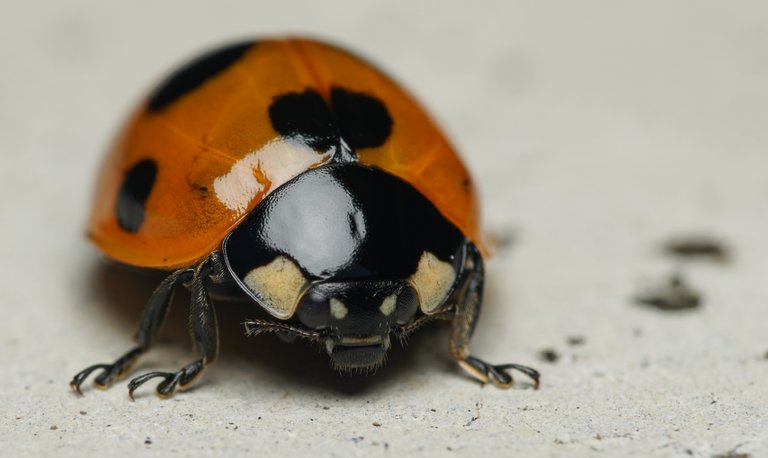
Click the images to see them fullscreen! You could count the lenses on the beetles eyes!
After some time as an adult the Ladybird beetle will find a mate, and the female will lay some eggs.
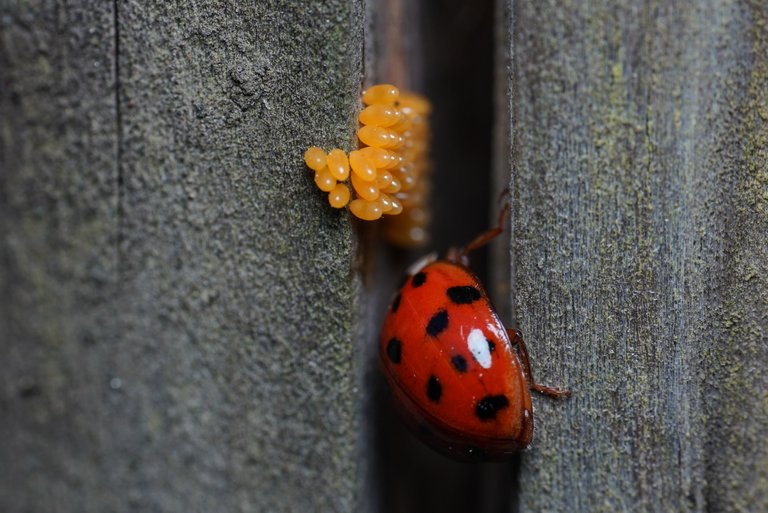
About a week later I visited the same fence post where the 21 spotted beetle had laid the eggs, where once they were bright orange, now a cluster of white broken egg shells, and a collection of tiny black hairy little beetle larva!
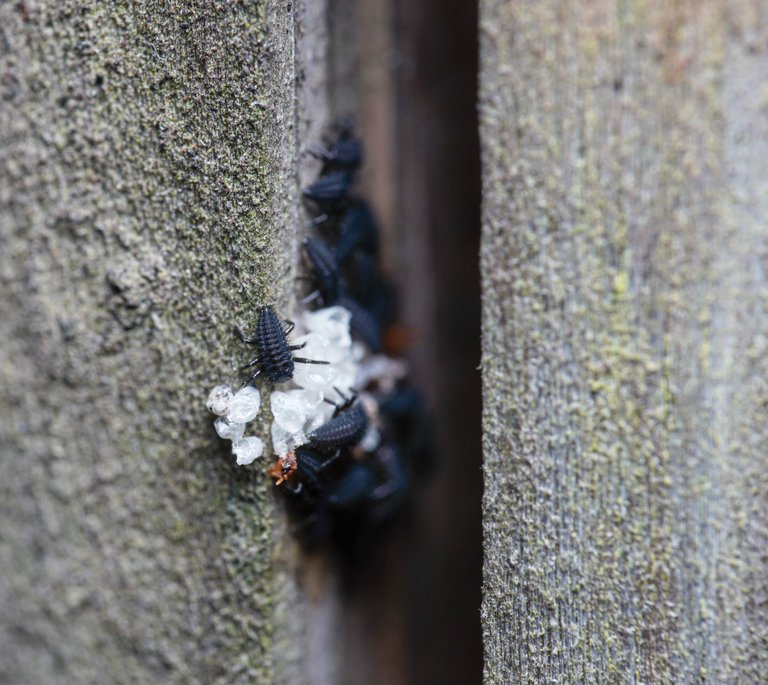
In this form they are absolutely ravenous, they need a lot of food to grow into the more familiar shiny red and black beetles that we all love.
Staking out a flower, or perhaps dining on protein rich pollen?
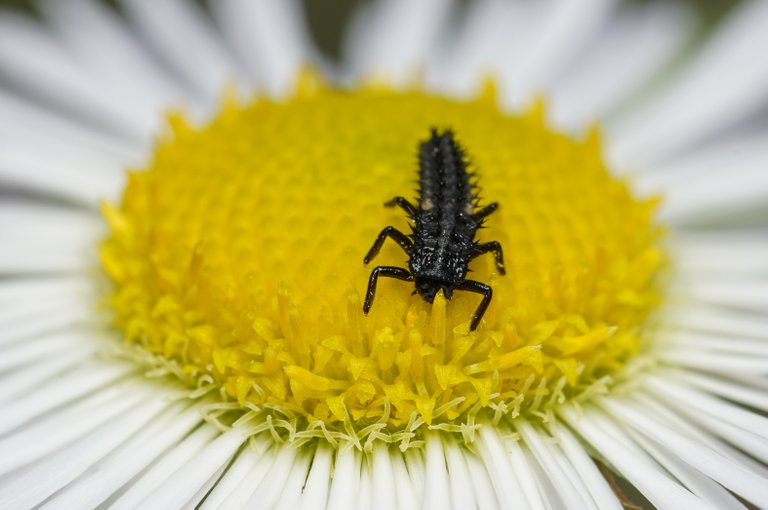
Slightly larger and much more active:
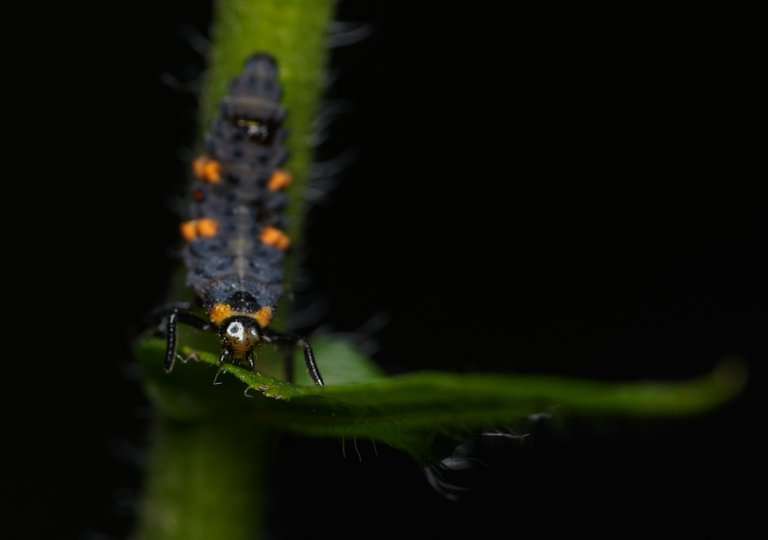
Close-up of this little monster's face:
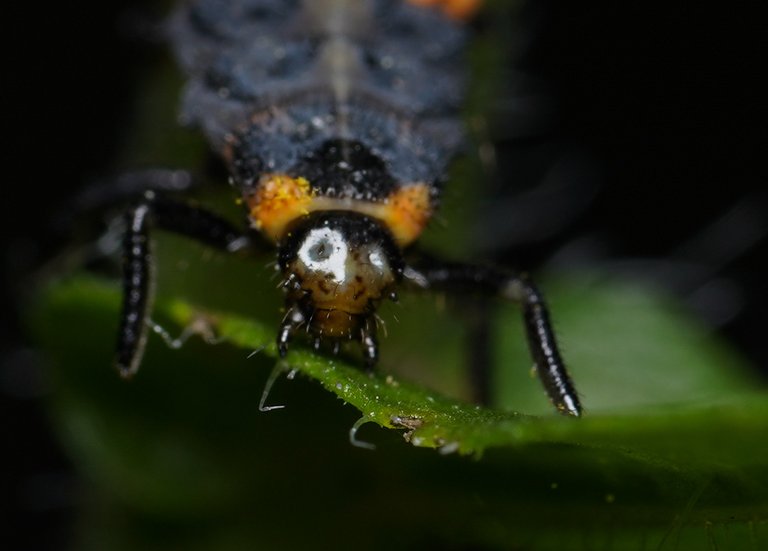
After gorging on aphids and things that are too slow to get away, the larva become a little bit chubby!
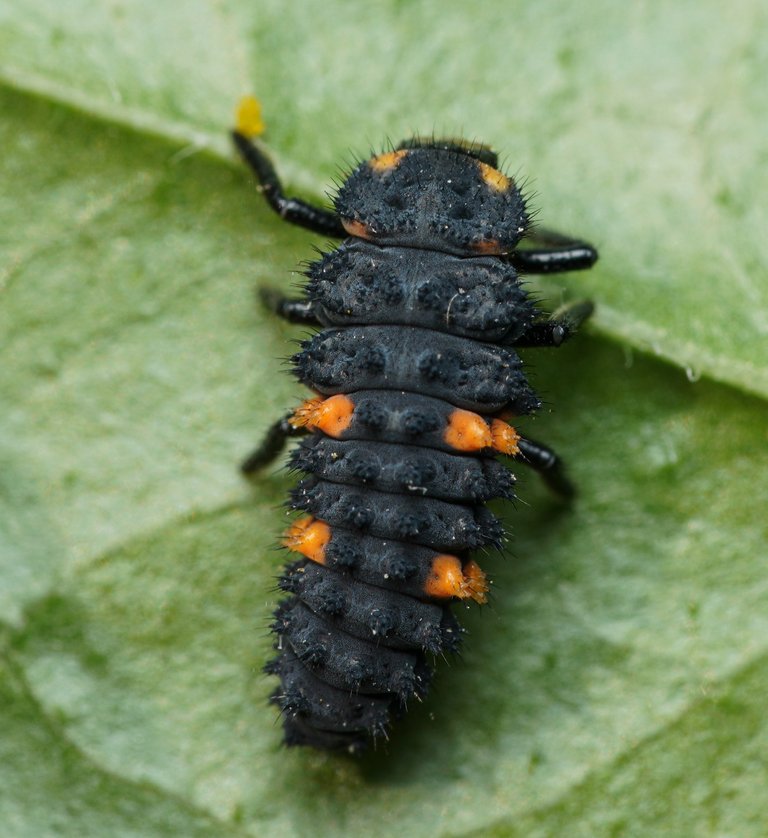
The above larva is nearing the end of this stage of life and will soon pupate, much like a butterfly, it will completely transform into a winged adult ready to propagate the next generation.
There are a number of interesting details that can be seen in this pupa.
The horizontal ridge like forms will be where the same joints are on the abdomen of the adult beetle, usually these are covered by the hard outer wings. Also, the wings themselves can be seen forming under the black bulge with a vertical to the camera demarkation.
Lastly, the larva's skin can be seen at the base of the pupa. I think it looks a bit like a pair of discarded pants!
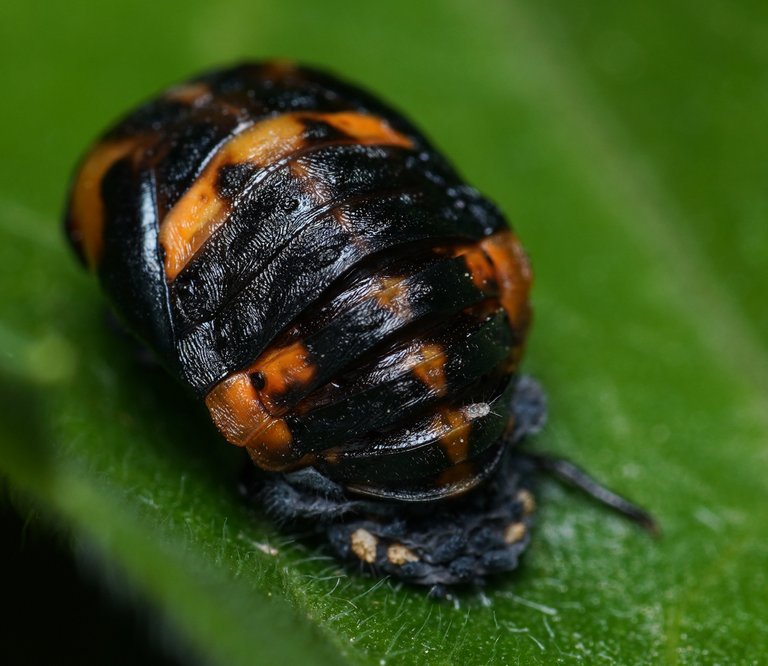
Another example of a ladybird pupa, this species will have much more red on its exoskeleton:

I hope you have enjoyed the photos as much as I did taking them!
Leave a comment below!
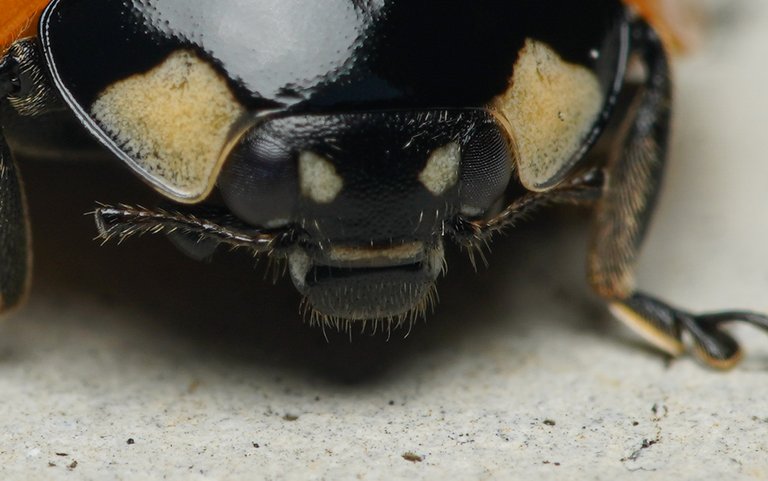
These are some fantastic shots!
Thanks for your continuing support @castleberry!
Wow, many times I saw those kind of little black larvae in my garden but I didn't know they were from ladybird beetles!
Yay! There trying to help out!
I appreciate the ladybugs a lot since they help me to solve the aphids problem on my pepper plants! Last year I had a vast amount of aphids on two plants and one of them I tried to spray with some solution, but the solution really did not work at all. Then I picked a bunch of ladybugs and they completely destroyed the pests in about day or two! Then I remember reading about the ladybugs and their lifecycle.
Are sure the ants will “take care” of aphids too?
Thanks for this beautiful post.
Some ants might but quite often the ants will guard them and protect the aphids from other predators such as the ladybirds.
Okay, I’ll try to find some ladybugs soon then, if I don’t want the aphids to ruin my fresh pepper plants!
I wish you luck! Save the peppers!
looks very nice what kind of camera + lens are you using ? keep up the good work :)
Hey @stresskiller I'm using a Sony A7R III, with a 105mm macro lens, I love it! Even cropped really close, the details still hold up.
fantastic post, great macros! a luck that you managed to find its larvae, too. success!! 🤸 I am really envy :)))
Hive !BEER for you as an extra 🍻
Thanks @qwerrie! I too was very happy to find the hatchlings where I had taken the picture of the eggs!
Thanks for the beer token! I'll figure out how to use it.
The Hivebuzz proposal already got important support from the community. However, it lost its funding a few days ago and only needs a few more HP to get funded again.
May we ask you to support it so our team can continue its work this year?
You can do it on Peakd, ecency, or using HiveSigner.
Your support would be really helpful and you could make a difference.
Thank you!Dear @mweich, we need your help!
Thank you @azamsohabi!